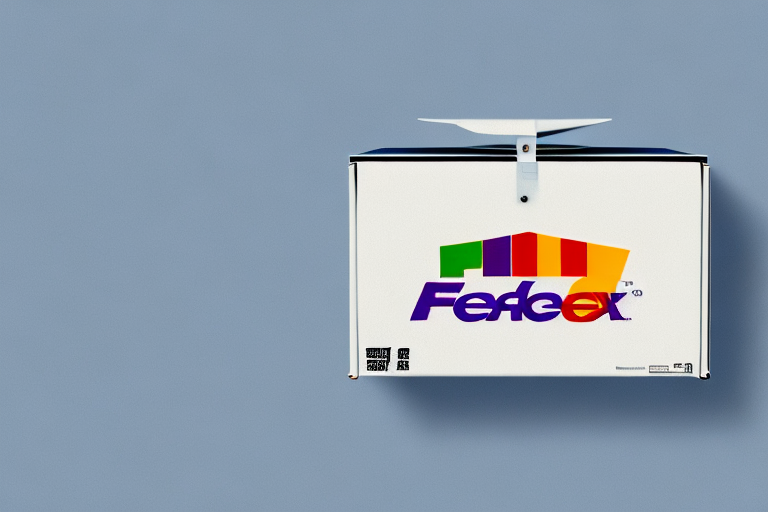Understanding FedEx Express Weight Limits
Shipping a package can be a bit of a hassle, especially if you are not familiar with the shipping restrictions and guidelines of the carrier. FedEx Express is a popular shipping option that offers fast and reliable delivery services both domestically and internationally. However, it is essential to be aware of the weight limit restrictions and guidelines when using FedEx Express shipping services to ensure that your packages do not incur additional fees or delays during transit.
FedEx Express Weight Limits and Guidelines
Standard Weight Limits
FedEx Express has a weight limit restriction of 150 pounds for individual packages or shipments. This weight limit applies to all FedEx Express shipping services, including FedEx International Priority, FedEx 2Day, and FedEx Standard Overnight.
Size Restrictions
In addition to weight, the size and dimensions of the package also play a crucial role. The maximum size for a package is 108 inches in length and 165 inches in length and girth combined. Exceeding these dimensions may require specialized services.
Specialized Freight Services
For packages that exceed the weight limit, FedEx offers specialized freight services such as FedEx Freight, FedEx Custom Critical, and FedEx Trade Networks. These services are designed to handle heavier and oversized shipments efficiently.
Impact of Weight on Shipping Costs
Cost Calculations
The weight of your package significantly impacts the shipping cost. FedEx Express charges additional fees for packages that exceed the weight limit, with fees calculated based on the package's weight and dimensions. These additional charges vary depending on the shipping service used, destination, and package size.
Potential Delays
Exceeding the weight limit can also result in delays. Overweight packages may require special handling and cannot be processed through automated systems, leading to longer transit times. Additionally, extra packaging materials needed for heavier packages can add to the overall shipping cost.
Consequences of Exceeding Weight Limits
Additional Fees and Rejections
Packages exceeding the weight limit may be rejected by FedEx or require transportation through specialized freight services, resulting in additional costs and longer delivery times.
Risk of Damage
Extra weight can cause pressure on the package, leading to potential damage to the box or its contents during transit. This can result in lost or damaged items, which are costly and frustrating for both sender and recipient.
Authoritative Sources
According to the latest FedEx Service Guide, understanding and adhering to weight limits is crucial for ensuring timely and cost-effective deliveries.
Accurately Weighing Your Shipment
Tools for Weighing
Use a reliable weight scale or visit a FedEx shipping location to weigh your package accurately. FedEx also offers online tools to estimate the weight based on package dimensions.
Preventing Extra Costs
Accurate weighing helps avoid unexpected fees or delays. Double-check the weight before shipping to ensure compliance with FedEx's weight limit guidelines.
Tips to Reduce Shipment Weight
Optimize Packaging Materials
Use lighter packaging materials such as lightweight boxes, envelopes, or tubes. Avoid unnecessary packaging components that add to the overall weight.
Package Consolidation
Remove any non-essential items and consider breaking down the shipment into smaller, lighter packages if possible.
Utilize Accurate Weight Measurement
Employ a digital scale for precise measurements and use a shipping calculator to find the most cost-effective shipping method based on weight and distance.
FedEx Express Services and Their Weight Limits
Domestic Services
- FedEx First Overnight: 1lb to 70lbs
- FedEx Standard Overnight: 1lb to 70lbs
- FedEx 2Day: 1lb to 70lbs
- FedEx Express Saver: 1lb to 70lbs
International Services
- FedEx International Priority: 1lb to 150lbs
- FedEx International Economy: 1lb to 150lbs
Special Packaging Options
FedEx offers a variety of packaging options, including boxes, envelopes, tubes, and specialty packaging for fragile or high-value items. Selecting the appropriate packaging ensures safe and secure delivery.
Shipping Oversized or Heavy Items
Specialized Freight Services
For oversized or heavy items, consider using FedEx Custom Critical or FedEx Trade Networks. These services provide the necessary handling and equipment for large shipments.
Freight Options
- Less-Than-Truckload (LTL): Shares truck space with other shipments.
- Full-Truckload (FTL): Exclusive use of a truck for your shipment.
Documentation and Permits
Shipping oversized or heavy items may require additional documentation or special permits. FedEx can assist in ensuring all requirements are met.
Common Misconceptions about FedEx Weight Limits
Inclusion of Packaging Weight
A common misconception is that the weight limit only includes the package's contents. In reality, the weight limit includes both the contents and the packaging materials.
Item Restrictions
While there are restrictions on hazardous materials, FedEx does offer shipping options for electronics and liquids. Always check specific restrictions and guidelines before shipping.
Range of Shipping Options
FedEx provides various shipping options beyond overnight or express services, including ground and international shipping. Choose the option that best fits your needs and budget.
Comparing FedEx Weight Limits with Other Carriers
Other shipping carriers have different weight limit restrictions:
- UPS Ground and Freight services: Up to 150lbs
- DHL Express: Up to 660lbs for international shipments
It's important to compare the weight limits and shipping guidelines of each carrier to select the most suitable option for your shipment.
Best Practices for Packaging and Labeling
Proper Packaging Materials
Use suitable packaging materials, such as sturdy boxes, bubble wrap, and tape. For fragile items, consider additional protections like fragile stickers or padded enclosures.
Accurate Labeling
Provide precise shipping information and clearly label your package. Accurate labels help prevent delays and ensure correct handling during transit.
Secure Weight Distribution
Ensure the weight of the items is evenly distributed within the package to avoid damage during transportation.
Impact of Fuel Surcharges on Shipping Costs
Fuel surcharges are adjusted based on fluctuations in fuel prices and are calculated according to the package's weight and destination. Heavier packages typically incur higher fuel surcharges, significantly impacting the overall shipping cost.
When estimating shipping costs, consider fuel surcharges to get an accurate understanding of the total expense. For more information, refer to the FedEx Fuel Surcharge Guidelines.






















